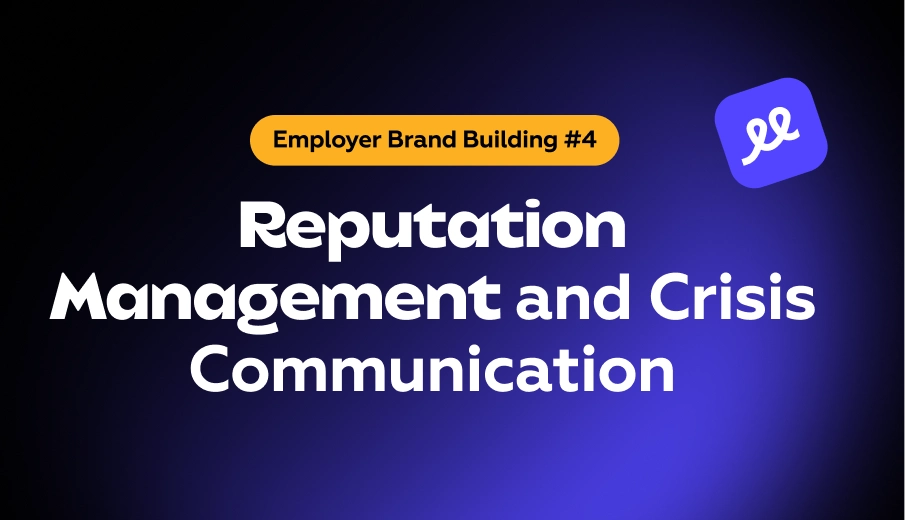Employer Branding Series #4: Reputation Management and Crisis Communication

One negative comment on Atmoskop or Glassdoor. A post by a former employee on LinkedIn. A complaint about working conditions on Facebook. In the digital world, it doesn’t take much to put your employer reputation at risk. But it’s not about silencing negative reactions — it’s about preventing them, responding to them effectively, and using them to improve your employer brand.
An employer’s reputation takes years to build but can collapse in just days. According to a LinkedIn survey, 75% of candidates check out potential employers on social media and review platforms before applying. And 55% of candidates will immediately pass on a company with bad reviews.
What Reputation Is Built On
Authentic Communication
Don’t just communicate successes and positive news. Be open about challenges and setbacks too. For example, when O2 was undergoing restructuring, they regularly shared both positive changes and the difficulties they were facing. Credibility grows with honesty.
Prompt Feedback Response
Respond to negative comments or reviews ideally within 24 hours. It’s not just about speed — every response should show you take feedback seriously. For example, Alza responds to every review on Atmoskop with concrete steps they’ve taken or plan to take.
Transparency in Times of Crisis
When a problem arises, the first response often determines the overall impact. People forgive mistakes, but they don’t forgive cover-ups or lies.
Consistency Toward Employees
What you say externally must match internal reality. If you promote work-life balance but your employees regularly work overtime, it will backfire sooner or later.
Active Community Engagement
Your best reputation builders are your ambassadors — satisfied employees. Give them the space and support to share their stories. Red Hat actively encourages employees to speak at conferences and publish articles, naturally strengthening their community presence.
Online Reputation Monitoring and Management
Active online monitoring is the foundation of effective reputation management. Keep an eye on review platforms like Atmoskop and Glassdoor, social media, forums, news sites, and job board ratings. Spotting potential problems early allows you to respond before things escalate.
TIP: Set up an early warning system — monitor team sentiment, social media activity, and feedback from exit interviews. This helps identify problem areas before they turn into crises.
Handling Negative Feedback
Negative feedback is inevitable. The key lies in how you respond. For example, Avast replies to every Glassdoor review — thanking the reviewer, acknowledging the issue (if valid), explaining how it’s being addressed, and offering to continue the conversation.
Avoid the biggest mistakes in responses:
- Ignoring negative feedback,
- Using an aggressive or defensive tone,
- Giving generic answers with no resolution,
- Denying obvious issues,
- Taking too long to respond.
Building a Positive Reputation
Crisis Communication in Practice
A crisis can strike anytime and in various forms — mass layoffs, data breaches, workplace accidents, negative media campaigns, or strikes. Success hinges on preparation. There’s typically about a 20-minute gap between internal and external communication. It’s not uncommon for internal updates to leak to the media quickly, so always account for that.
TIP: Every responsible company should have prepared scenarios for different types of crises — including clearly defined roles and responsibilities, prewritten communication templates, defined communication channels, and contact lists for key stakeholders.
Building a Positive Reputation
The best defense is prevention, not offense. Investing in reputation is like saving — small but regular contributions compound over time. With the right approach, your reputation can become one of your strongest competitive advantages on the job market.
TIP: Create an early warning system — monitor team sentiment, social media activity, and exit interview feedback. It helps you detect problem areas before they escalate.
In the next article, we’ll explore recruitment marketing.
This series is created in collaboration with the Association for Strategic Communication and Public Relations.




